Southern gardens may be the envy of gardeners in other climates because of the ample rainfall and extended growing season. But gardening in the U.S. South comes with the challenges of prolonged heat and maximum humidity. Luckily for us, plants that are native to the Southeast are champions at thriving in a warm, muggy climate. These top 10 natives include some iconic species, like the southern live oak tree and the Carolina jessamine vine. Others may be less familiar but are no less beautiful, resilient, easy to grow and easy to find at the nursery.
For best results do your planting — by seed, transplant or layering — in the cooler months of fall or spring. Autumn is the absolute best planting time, because it allows time for roots to establish themselves before winter dormancy, and then the plants are ready to push out new growth in the spring. If you’re planting in the spring, make sure the soil is warm and not too wet, and take extra care to keep new plants watered.
A general rule of thumb for Southeastern native plants is that once established, they survive just fine on average annual rainfall. The Southeast gets 40 to 80 inches of rainfall per year, depending on the exact location (check out the rainfall map here). Pay attention to each plant’s preferred soil conditions and match the plant to the soil in your garden. Planting natives in the right place and letting them grow with the available rainfall will reduce your landscape’s overall watering needs and create a wildlife-friendly landscape.
Not in the Southeast? Browse plants native to other regions of the U.S.
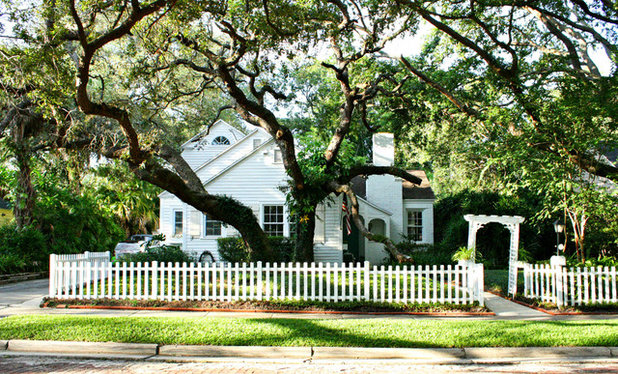
Mina Brinkey
Southern Live Oak(
Quercus virginiana)
Native to coastal areas of the U.S. Southeast, from Virginia south to Florida and the keys, along the Gulf Coast and into coastal Texas
Best large canopy tree. Southern live oak is a highly revered, iconic tree of the South. Historically it lined wide country driveways to antebellum homes. Today it’s used as a street tree and forms massive canopies in yards throughout the South. It’s a highly adaptable and slow-growing tree that can have a magnificent canopy spread when mature. The ancient proverb holds true for this gem of a tree: “The best time to plant a tree was 20 years ago. The next best time is now.” It grows best in full sun in well-drained soil.
See how to grow southern live oak
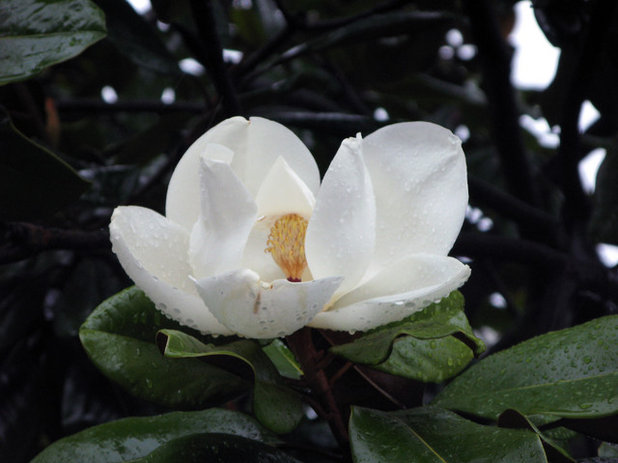 Southern Magnolia
Southern Magnolia(
Magnolia grandiflora)
Native range extends throughout the Carolinas, Georgia, northern and central Florida, Alabama, Louisiana and Mississippi and into eastern coastal Texas
Best large flowering tree. There are many lovely magnolias with big flowers abounding in spring. Southern magnolia, however, is a large tree with impressive evergreen foliage. The deep, glossy green leaves with rusty red undersides and the autumn fruit make this tree a great ornamental specimen even when it’s not in flower. It grows best in full sun and rich soil.
See how to grow southern magnolia
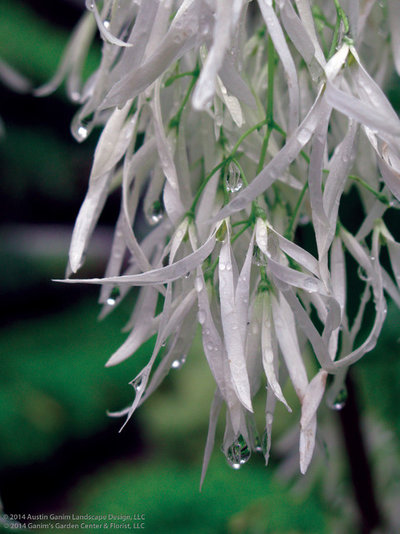
Austin Ganim Landscape Design, LLC
Fringe Tree(
Chionanthus virginicus)
Native to the Southeast but hardy to colder zones
Best small, flowering tree. Native fringe tree is a fragrant, small flowering tree suitable for courtyards and small spaces. Lacy white flowers cover the tree in spring and later develop into vibrant purple fruits in autumn. It can be trained as a large shrub with many stems or shaped and encouraged into an upright multistemmed tree form. Native fringe tree is an underutilized plant but is becoming more popular in nurseries. It grows in full sun to partial shade in moist, rich soil.
See how to grow fringe tree
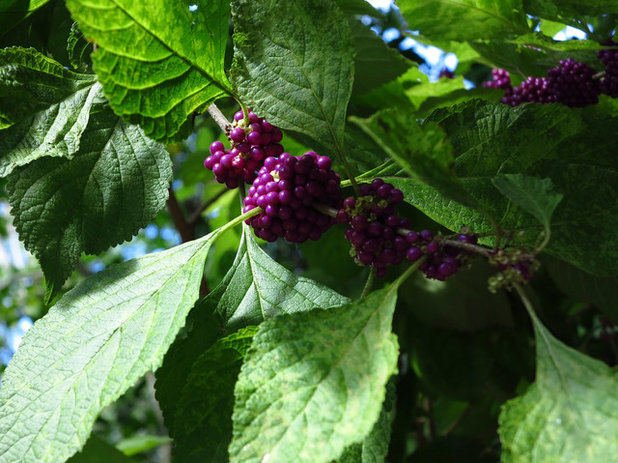 Beautyberry
Beautyberry(
Callicarpa americana)
Native to the Southeast from Texas and Oklahoma east to Florida and north to Maryland
Best autumn-fruiting shrub. Beautyberry has recently become en vogue among native-plant enthusiasts. It is easy to grow, spreads well but is not aggressive and provides a unique splash of bright purple fruit in autumn. On top of that, it’s an excellent wildlife food plant, because it attracts pollinators in spring and birds in autumn. It grows in full sun to partial shade and in clay or sandy, moist soil.
See how to grow beautyberry
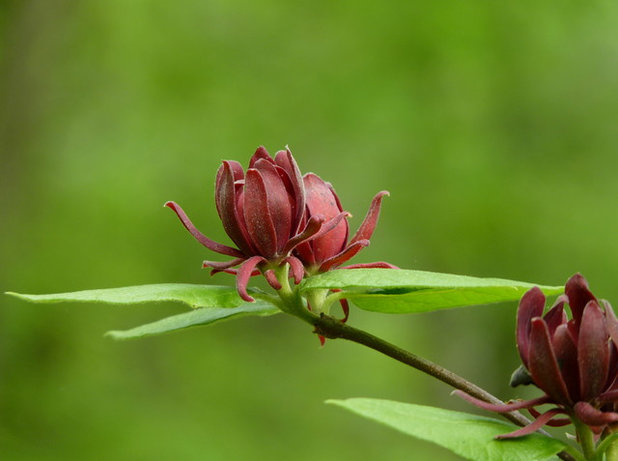 Sweetshrub
Sweetshrub(
Calycanthus floridus)
Native range is throughout the Southeast and Northeast, as well as Illinois and Missouri in the Midwest
Uniquely fragrant shrub. With so many fragrant shrubs available to Southern gardeners — from fragrant jasmine vines to lush gardenias — there’s no shortage of richly perfumed flowers throughout spring and summer. Many of the natives listed here are famous for their intoxicating scent, but sweetshrub outcompetes them all. It blends fruitiness, spiciness and sweetness into one small flower. It is a great shrub for naturalizing and is easily propagated with layering. It grows best in partial shade in rich, moist soil.
See how to grow sweetshrub
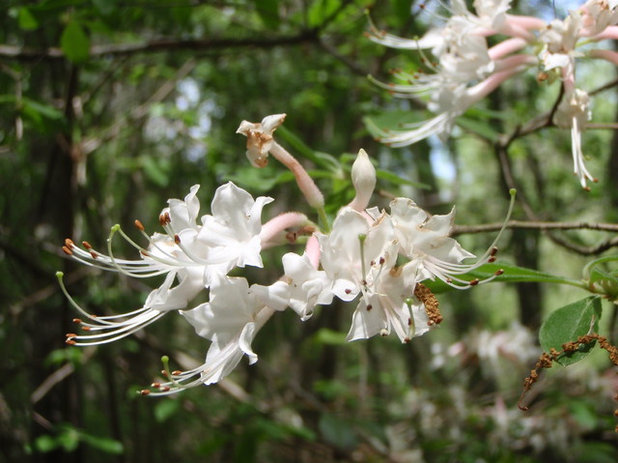 Piedmont Azalea
Piedmont Azalea(
Rhododendron canescens)
Native range includes North Carolina to Tennessee south to Central Florida and west to East Texas
Best native azalea. Piedmont azalea is one of the most common and widely available deciduous azalea shrubs. As an understory plant, with delicate light white-pink blooms, it easily blends into a woodland garden or a formal planting bed. It flowers before it pushes out leaves in spring, creating a dramatic effect with rich brown stems supporting numerous pink flowers. It grows best in partial shade in acidic, rich and moist soil.
See how to grow Piedmont azalea
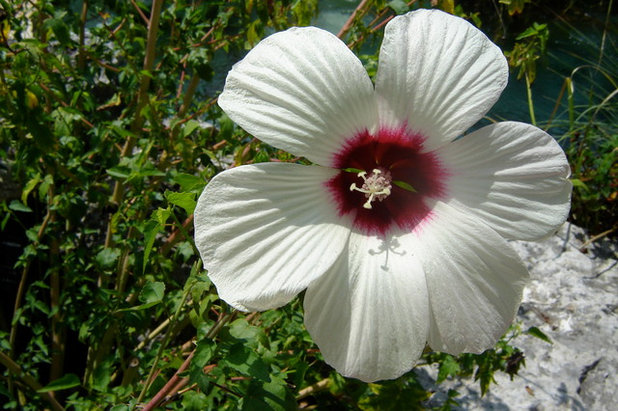 Crimsoneyed Rosemallow
Crimsoneyed Rosemallow(
Hibiscus moscheutos)
Native to the Southeast, East and parts of the Midwest
Best herbaceous perennial. Crimsoneyed rosemallow loves to grow in wet soils near streams, ponds and swales and has a large growing range: zones 5 to 10. There are many types of hibiscus — including the nonnative woody shrub commonly called rose of Sharon and the tropical hibiscus species — that love heat and do not tolerate wet soil. There are so many hibiscus species to choose from, but crimsoneyed rosemallow is the species of choice because of its adaptability, native status and easy maintenance. It grows best in full sun and wet soil.
See how to grow crimsoneyed rosemallow
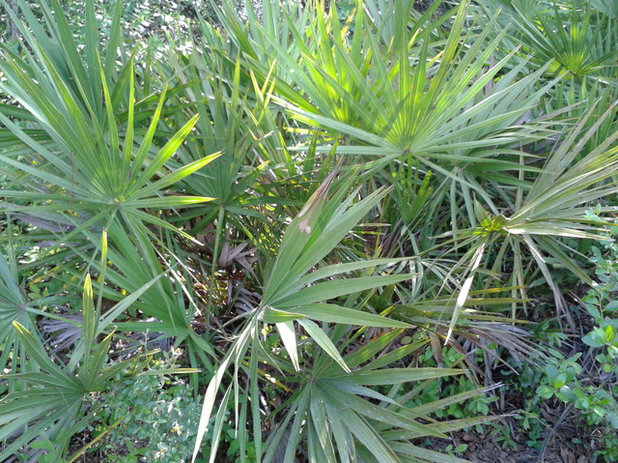 Saw Palmetto
Saw Palmetto(
Serenoa repens)
Native from South Carolina south to all of Florida and east to Texas
Best massing ground cover for tough sites. Saw palmetto is an extremely tough native for use on slopes, in coastal areas or as a woodland understory plant where it has room to spread. It is a southeastern coastal plains native that will grow in the toughest conditions. It is slow growing and drought tolerant and has a unique texture due to its star-shaped erect fronds. Choose your planting location wisely, because it is not easily removed. It grows best in full sun in dry, sandy soil.
See how to grow saw palmetto
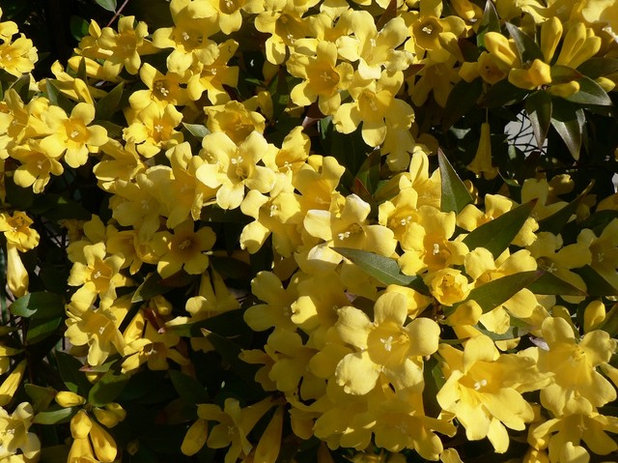 Carolina Jessamine
Carolina Jessamine(
Gelsemium sempervirens)
Native in the Southeast from Virginia to Tennessee and in all of Florida and Texas
Best flowering vine. Carolina jessamine is a vigorous flowering vine but is not invasive, like kudzu and wisteria. Its twining stems need a support to wrap around and climb. It’s perfect for a trellis or an arbor or as a climbing vine growing on a support against a wall face. It is one of the earliest spring bloomers, displaying a pop of yellow when other plants have yet to break their dormancy. As an evergreen it’s a great year-round vine, with its glossy green leaves that persist through winter. It grows best in full sun in rich, moist soil.
See how to grow Carolina jessamine
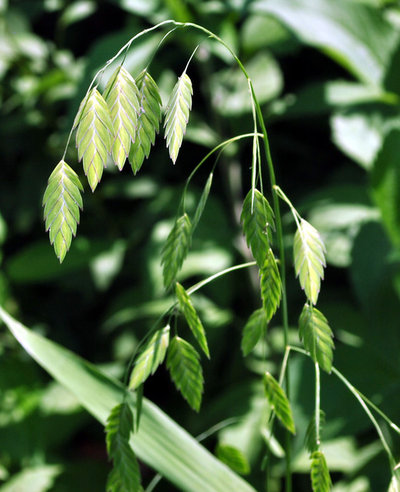 Inland Sea Oats
Inland Sea Oats(
Chasmanthium latifolium)
Large native range from Florida north to New York, throughout the Midwest and west to New Mexico
Best ornamental perennial grass. Ornamental grasses, both native and nonnative, have become very popular in today’s gardens. Inland sea oats is a perennial grass that’s native to shaded streams and river banks east of the Rocky Mountains. This grass is one of the most ornamental of the native grasses, because of its flat leaves on slender stems and flower heads that develop into light, papery, golden brown seeds in autumn. It grows best in partial shade and moist soil.
See how to grow inland sea oats





